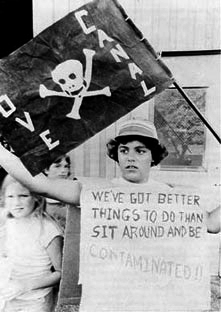During the height of the Occupy Movement, thousands of individuals submitted pictures of themselves to the We are the 99 Percent tumblr blog. They posed with letters and signs, telling individual stories of what it’s like to be in the 99%.
There’s been a solid critique of how whites, youth, and those with college access have a larger voice on this site, as well as dismissive responses from those on the right, but I’m struck by the rhetoric used. One word stands out to me as particularly jarring: Luck.
[Written for a child] “I am 3 years old and lucky to go to preschool, have a roof over my head and spaghetti-o’s in my belly. I am lucky to have Medicaid while my parents don’t qualify.”
“i am 22, living in a trailer in exchange for labor… We eat 69c mac’n’cheez or ramen; i drive a car illegal with disrepairs. And i’m lucky.”
“I am lucky my husband has a decent job because before I was on his health insurance my coverage denied normal, annual GYN visits because ‘Being a woman is a pre existing condition.’ And we are the lucky ones!!”
“But I am one of the lucky ones. I was finally diagnosed with borderline personality disorder I am properly medicated”
“I’m one of the lucky ones. I enjoy my part-time job… yet… [have a] $65,000 [student] loan. 4 side jobs – not enough for rent. No health insurance. No children, so I don’t qualify for any aid, but I’m one of the lucky ones.”
“I am a lucky one. I have enough money to eat 3 of 4 weeks of the month…”
Luck is a word that comes up incredibly frequently among the 99 percenters, alongside words like debt, crisis, and unemployment. But what kind of luck is this? What does it mean to be “one of the lucky ones?”
In these posts, people struggling to hold multiple jobs call themselves “lucky” for having food most of the month, enough work to survive, or health care for part of their family — even as they report drowning in debt, losing work, and losing hope.
This isn’t our usual meaning for luck, and it only makes sense in comparison — to the “unlucky ones.” But if the “99 percent” is lucky, who exactly is unlucky? And how does this “luck” relate to the accompanying uncertainty, stalled careers, and failure to attain personal and collective dreams?
After sending in an early picture, I was startled to realize I’d also used the rhetoric of luck as a frame for my complaint. Of course I live in relative privilege to others, but why subsume my experience of uncertainty and dislocation beneath that privilege?
On the one hand, the rhetoric of luck acknowledges our relationships to other human beings, including those with greater struggles. To observant readers, it can also point to the structural and economic challenges that even “lucky” people face.
But I’d argue that the same rhetoric turns our lives into happenstance. It moves our stories harmlessly to the side, so that larger — and often deceptive — narratives about luck, hard work, and the American Dream can continue as planned. By prefacing our stories with an admission of luck, we displace our own voices and cast doubt on our experiences as something that just “happened to us.”
Yet the current economic and political situation didn’t just happen to either the “lucky” or the “unlucky” ones. As in other periods of U.S. economic history since the 1700s, the underemployment, debt, financial instability, and lack of affordable life-goods that Americans face are the result of deliberate policies designed to streamline and protect growth for investors, large corporations, and other profiteers — often at the expense of individual citizens, workers and business owners without large amounts of capital or political access.
So rather than slip into the rhetoric of luck, what other frames can we use to talk about our experiences? Framing our experiences in light of multiple takes on economic history may allow us to draw from previous generations in assessing our options for greater involvement in setting the guidelines for our society. Initiating discussion on the civic responsibility of every stakeholder may involve bringing to task those who have instituted policies beneficial only to a small minority of elite Americans. And collective effort from the left and the right could enable us to ensure that economic activity bears appropriate fruit for individuals, households, and families, and that the people actually have a voice in our towns, states, and nation at least equivalent to other sources of power.
————————
Celia Emmelhainz, M.A., is an economic anthropologist who conducts ongoing research on citizenship, economics, and religion in Central Asia. With a degree in anthropology from Texas A&M University, she currently works as an academic librarian in Kazakhstan.
Lisa Wade, PhD is an Associate Professor at Tulane University. She is the author of American Hookup, a book about college sexual culture; a textbook about gender; and a forthcoming introductory text: Terrible Magnificent Sociology. You can follow her on Twitter and Instagram.









